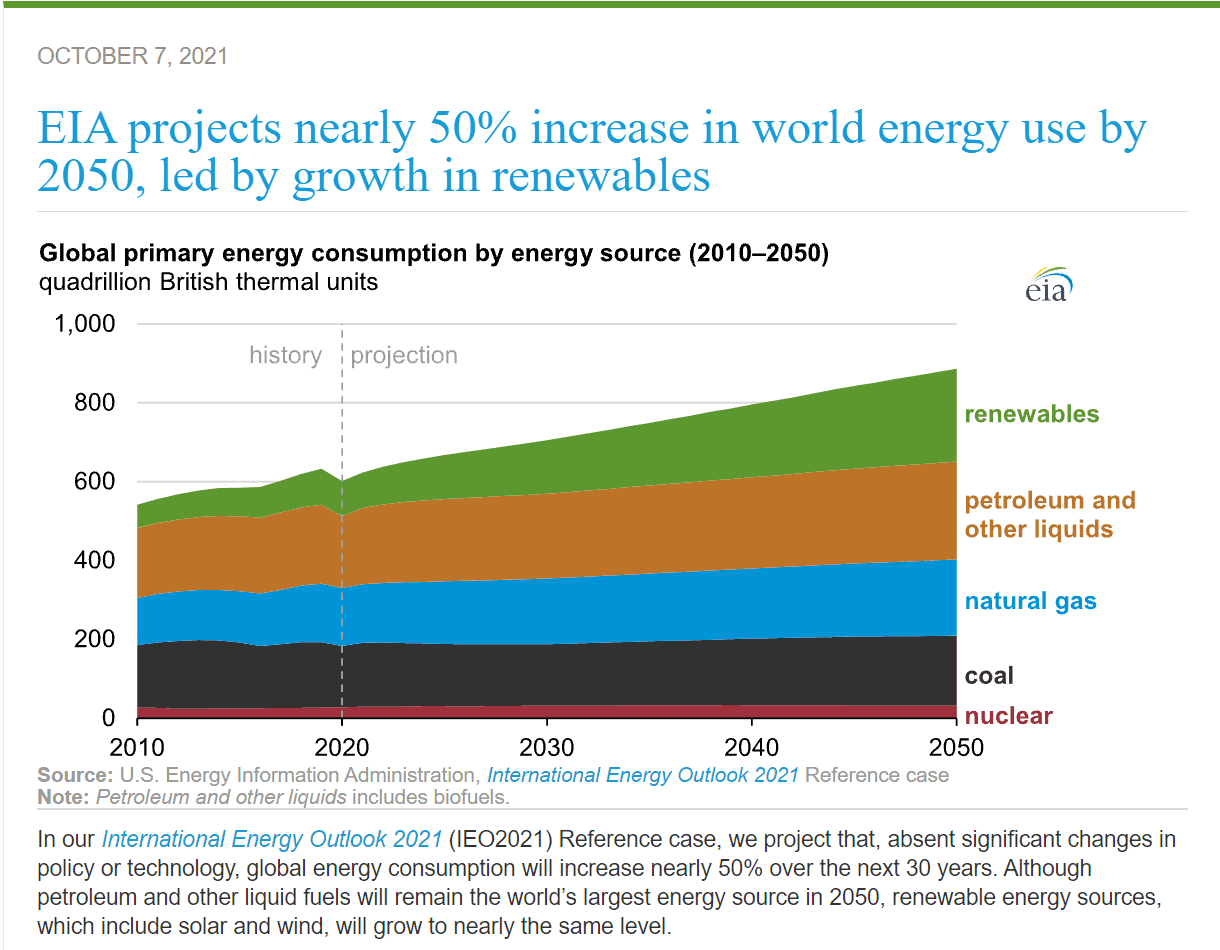EIA Releases International Energy Outlook 2021–What Is the Big Picture?

Photo Credit: Getty
The U.S. Energy Information Administration (EIA) yesterday released International Energy Outlook 2021, this year’s iteration of the agency’s annual report projecting world energy market trends over a 30-year period.
The big picture, according to today’s top headline on the agency’s landing page, is that “EIA projects nearly 50% increase in world energy use by 2050, led by growth in renewables.”

The text accompanying the chart above explains that “although petroleum and other liquid fuels will remain the world’s largest energy source in 2050, renewable energy sources, which include solar and wind, will grow to nearly the same level.”
Well, that’s one way of putting it. From the perspective of today’s energy and climate battles, the big news is somewhat different. That becomes clearer when we examine the spread sheet (Table A02) on which EIA’s chart is based.

The nearly 50 percent increase in world energy use is led by renewables, which provide 165 percent more energy in 2050 (235.2 quadrillion Btu) than in 2020 (88.7 quadrillion Btu). Note, though, that liquid fuels, natural gas, and coal consumption also increase. Liquid fuel increases by 32 percent, natural gas by 31 percent, and coal by 21 percent.
So, one big picture point to emerge from EIA’s numbers is that, although the growth in renewables reduces the growth in fossil fuels, world fossil fuel consumption in 2050 is still projected to be significantly greater than it is today.
Finally, while it is accurate to say that EIA projects the world to use nearly as much renewable energy as petroleum and other liquid fuels by 2050, the central policy debate today is about the cost, feasibility, desirability, and legality of coercive machinations to replace all fossil fuels with renewables.
In EIA’s Reference case projections, the global market share of renewables increases from 14.7 percent in 2020 to 39.1 percent in 2050. However, “absent significant changes in policy or technology,” fossil fuels in 2050 still retain a nearly 70 percent share (69.7 percent) of the global energy supply.